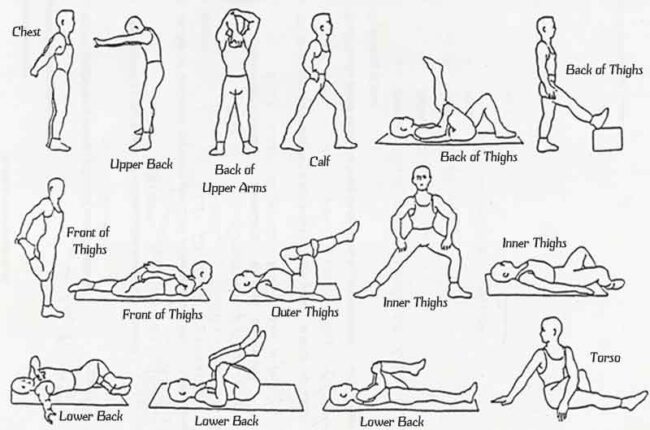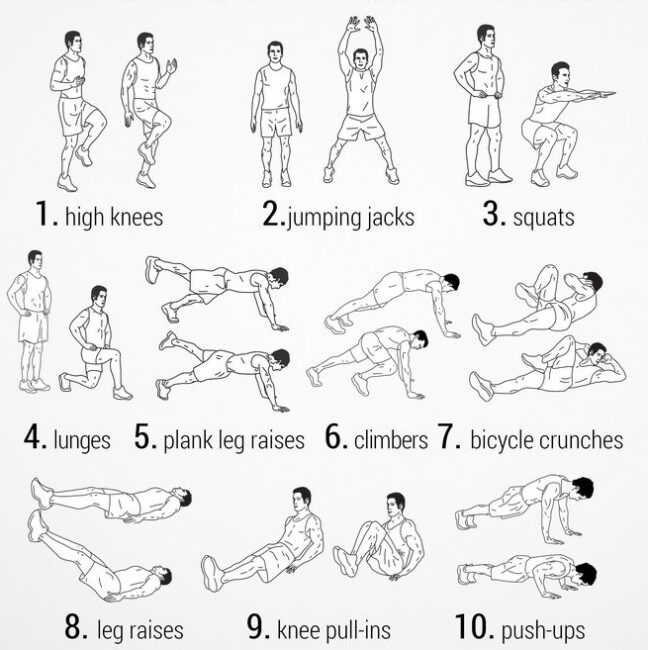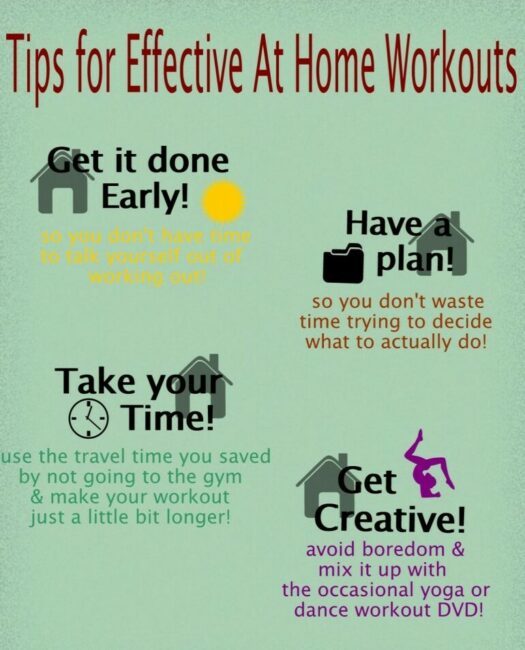Get Fit at Home: A No-Gym Guide to Starting Your Fitness Journey
Let’s be honest: gym memberships can cost more than your monthly coffee habit. But here’s the thing – you don’t need fancy equipment or a sleek health club to transform your body. Your living room might be the perfect gym you never knew you had.
Starting a home fitness routine is surprisingly simple. A yoga mat, resistance bands, and dumbbells can turn any space into a workout zone. These basics cost less than a month’s gym membership, and they’re all you need to target every major muscle group. But here’s the best part: your body weight is often enough.
Think about it – push-ups have built soldiers’ strength for centuries. Squats have shaped athletes’ legs since ancient Greece. And a brisk walk around your neighborhood burns just as many calories as a treadmill session.
Ready to start? Begin with a 20-minute walk (yes, that counts as actual exercise). Then try this simple routine:
- 10 push-ups (from your knees is excellent)
- 20 bodyweight squats
- 30 seconds of plank
- 15 crunches
Do this three times a week, and you’ll notice changes before you know it. The secret isn’t fancy equipment – it’s in showing up for yourself in your living room.
Remember: the best workout plan isn’t the most expensive or complicated. It’s the one you’ll do. And when your gym is just a few steps away, you’re already halfway there.
Getting Fit: The 5 Building Blocks You Need (And Yes, You Can Do Them All at Home!)
Let’s talk about fitness without the fancy gym lingo. You know what’s crazy? You only need five essential elements to build a solid workout routine. No expensive equipment is required — just you, some space, and some motivation.
First up: the warm-up. Think of it as your body’s morning coffee. A casual stroll around the block or a leisurely spin on your bike gets everything flowing and tells your muscles, “Hey, we’re about to do something here!”
Now for the fun part — getting that heart pumping. It’s where you pick up the pace. Maybe you’re into jumping rope (hello, inner child), or you prefer cranking up your favorite playlist and following along with a YouTube dance workout. The key? Find something that makes you forget you’re exercising.

Then there’s strength training, which sounds scarier than it is. You don’t need to become a bodybuilder — we’re talking basic moves that make everyday life easier. Squats are just sitting down and standing up (something you do anyway). You can do push-ups against a wall if the floor version isn’t your thing yet. And crunches? They’re not anyone’s favorite, but they get the job done.
Flexibility work is like hitting the reset button on your body. Simple stretches or basic yoga moves help keep you limber and might even fix that annoying back pain from sitting at your desk all day. Plus, it feels incredible.
Finally, the cooldown is a warm-up in reverse. Slow down, let your breathing return to normal, and pat yourself on the back—you did it!
Here’s the best part: You can mix and match these elements however you want. Short on time? No problem. Crank up the intensity for a quick but effective session. Would you rather spread things out? Go for it. Split your cardio and strength work into different days. Remember the golden rule: always warm up and cool down, even in a rush. Your body will thank you.
The secret isn’t fancy equipment or complicated routines—it’s in showing up and moving your body well. That’s it. That’s the whole deal.

Got a date with your stationary bike? Instead of cruising through a 45-minute ride while catching up on your favorite show, crush a 25-minute session on a more demanding setting. Trust me, your body will thank you (eventually).
The same goes for your daily walk. That flat route around your block? Maybe it’s time to tackle those hills you’ve been avoiding or mix in some jogging intervals. Start small — even a 30-second jog here and there can make a huge difference.
Here’s a neat trick for strength training: compound exercises. These bad boys are like getting a two-for-one deal at the gym. Take squats, for instance. A straightforward move works pretty much everything from your thighs to your calves. And push-ups? They’re the Swiss Army knife of exercises, simultaneously hitting your chest, shoulders, arms, abs, and back.
Not into designing your workouts? No problem. There’s a whole world of fitness videos out there waiting for you. Whether you fancy throwing punches in kickboxing, channeling your inner dancer with belly dancing, or strengthening your core with Pilates, there’s something for everyone. You can grab these videos at any bookstore, snag them from discount shops, or find them online. Just remember to pick something that matches where you’re at fitness-wise — no need to jump into advanced stuff if you’re starting.

Starting Your Fitness Journey (Without Losing Your Mind)
Let’s be honest – beginning to work out can feel like trying to learn a new language. But here’s the thing: you don’t need to turn into a gym rat overnight.
Here’s what works for beginners: Hit up some cardio thrice a week for about 30 minutes. Think walking, swimming, dancing – whatever gets you moving and doesn’t make you hate life. Then, throw three strength sessions, about 20-30 minutes each. You’ll want to show some love to all your major muscle groups – legs, arms, core, back, the whole party. Aim for three sets of 10-15 reps for each exercise, but don’t stress if you can’t hit those numbers immediately.
Starting slow is not only okay but also brilliant. Your body is like a shy friend at a party; it needs time to warm up to this whole fitness thing. Pay attention to how you feel. If something hurts (and not that good, I’m getting stronger), your body is trying to tell you something.
Here’s a pro tip: When you exercise, focus on feeling the right muscles working. If you’re doing crunches, but your neck feels like it’s doing Olympic lifting, something’s off. Close your eyes, tune in to your body, and don’t be afraid to adjust.
Now, let’s talk about the elephant in the room: working out at home. Sure, it’s convenient – no commute, no waiting for equipment, no judgment from that guy who grunts too loud. But let’s be honest, your house is an obstacle course of distractions. The kids need something, the dog’s giving you those eyes, your phone’s blowing up, and somehow the refrigerator keeps calling your name.
Want to know the secret weapon of people who stick to home workouts? They knock it out first thing in the morning before their brain can come up with excuses before the day’s chaos kicks in and before they remember all those “more important” things they could be doing. Plus, there’s something pretty awesome about starting your day knowing you’ve already done something good for yourself.
Remember: The best workout plan is the one you follow. Please keep it simple, consistent, and, most importantly, keep showing up.

Getting the Most Out of Your Home Workouts
Let’s face it – working out at home can feel lonely and repetitive. But with the right approach, your living room can become your favorite fitness studio. Here’s how to crush those home workouts:
Feed Your Fitness Brain
Missing those fancy gym machines? Don’t sweat it. The internet is your trainer now. Spend time exploring workout videos and fitness sites – they’re goldmines for fresh exercises and proper form tips. And yes, those detailed exercise photos matter more than you think. They’re your best friends for nailing the appropriate technique when no one can correct you.
Find Your Fitness Buddy
Everything’s better with a friend, including burpees (okay, maybe burpees still aren’t fun, but they’re more bearable). Having a workout partner isn’t just about motivation but accountability. When someone’s counting on you to show up, those “just five more minutes” in bed become much less tempting.
Treat Your Workouts Like Important Meetings
Pull out your calendar and mark those workout sessions like non-negotiable appointments—because they are. Plan a month, and reschedule immediately if life throws you a curveball (as it tends to do). Don’t just delete that workout—move it.
Track Your Journey
Start a fitness journal – trust me, it’s more valuable than you’d think. Write down your victories, struggles, and those random discoveries about what works for your body. Notice how that morning run feels terrific after a protein-packed breakfast but terrible after your favorite cereal? That’s the kind of gold you’ll find in your journal.
Dream Big, But Smart
Set goals that make you slightly nervous but excited. Maybe it’s running your first 5K, doing ten real push-ups, or finally mastering that yoga pose you’ve been eyeing. Break these bigger goals into smaller milestones, and treat yourself when you hit them. New workout clothes, fresh equipment, or that fancy water bottle you’ve been wanting – you’ve earned it.
Remember, creating a solid home workout routine isn’t about mimicking the gym experience—it’s about creating something that works uniquely for you, in your space, on your terms. Keep it fun and challenging, and show up for yourself.
Final Thoughts on Getting Fit at Home
Think about the last time you skipped breakfast or pulled an all-nighter. It feels awful. That’s because eating and sleeping aren’t optional – they’re just part of being human. Exercise belongs in that same category.
Most people treat working out as a temporary fix, something to do until they reach a goal weight or look good for a wedding. But that’s like saying they’ll only eat healthy food until their birthday. It doesn’t work that way.
The trick is to stop seeing exercise as a big, scary commitment and think of it as just part of your day, like brushing your teeth or checking your phone. There is no debate, no negotiation—you do it.
The best part? Once you make this mental shift, everything gets easier. You’ll stop wasting energy deciding whether to work out and spend that energy moving instead. Your body will thank you, your mind will feel more apparent, and you might even start looking forward to it.
Remember: You’re not “going on an exercise kick.” You’re just living life as nature designed your body to live it—in motion.
Important Safety Note:
As with any new exercise program or equipment, it’s essential to consult your physician to ensure the equipment is safe for you to use. It is especially crucial if you have any medical or physical conditions impacting your ability to exercise properly or putting your health at risk. Additionally, if you’re taking medication that affects your heart rate, blood pressure, or cholesterol level, your doctor’s advice is vital to create a workout plan that suits your needs.
Share Your Thoughts and Questions
I hope this in-depth on Getting Fit at Home was helpful and informative. I encourage you to share your thoughts and questions on the topic. Have you tried any of the issues in the article before or have experience with similar rowing machines? Your insights can help others make an informed decision. Additionally, I welcome any feedback about my website and suggestions for future content. Your input is invaluable in creating a supportive and informative community.
I look forward to hearing from you and continuing the conversation!
Disclaimer: I am not a personal trainer or a healthcare professional. The above workout suggestions and tips work best for me, but they might not be the correct type of exercise for you. I recommend consulting a doctor or health professional before changing your diet and/or fitness routine.
You May Also Like
There’s no better thing to be doing than exercising at home during a pandemic, I must say.
I can’t afford a home gym, so this is perfect for me, and our gyms are closed at the moment. Stretches and warm-ups are essential, and you have added that all in here, so you covered everything thoroughly and worded them exceptionally well. I would much prefer doing a 25 minutes exercise than a 45 minute like you said. It’s just too intense doing a prolonged winded exercise like running on the treadmill or going for cycles. Kinesthetics is the way to go, and I’m happy I found this page to add a few more workouts to my regime every day!
Thanks very much.
Thanks for sharing your thoughts. If you prefer doing a 25-minute workout as do I, step up the intensity.
Robert
Thank you for this post, Robert, I have been keeping fit at home for more than 20 years. I have never belonged to a health club, and I’ve never had a gym membership. However, when the Fitbit fitness tracker was introduced, it made keeping track of my progress easier and it was a welcome addition. I love your five elements of getting fit at home. I follow some aerobics programs, and recently I have started going on 1-hour walks.
Hello Juliet,
Thanks for sharing your thoughts about keeping fit. It sounds like you are doing all of the right things.
All the best,
Robert